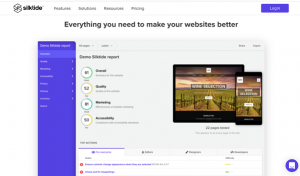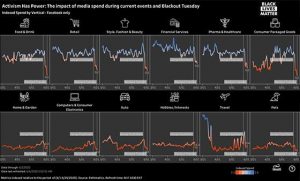
Now that you’ve set up your latest PPC campaign, how can you be sure your ads are reaching the right people? Well, there’s an app for that. Well, not exactly, but there is a way to ensure that your intended audience is seeing your ads. What’s this magical feature? Demographic targeting.
What is Demographic Targeting?
With demographic targeting, you can fine-tune your audience by, that’s right, demographics. You can choose which groups you want your campaign to reach. The three main factors you can target are:
- Age
- Gender
- Parental status
You have to know who it is you’re trying to reach with your ads. This is where your buyer personas are going to come in to play. Who do you want to buy your product? First we need a product to sell.
Before we start, we need to create a product for you to advertise. I have a few friends having their first or second babies this spring, so we’ll create a brand tailored to young moms. We’ll call it: Mommy Mania.
Now that we’ve got a product, we need to know who we’re targeting. We’re targeting women in this example. And because many new moms are in their mid-twenties to early thirties, that’s the age group we’ll target.
Why Demographics Matter
Before we dive too deep, let’s cover why you should be using demographics at all. It’s a simple answer. By using this feature, you’re more likely to reach the people buying products like yours. They’ll be the ones that actually click on your ad when they see it.
Demographic targeting is based on the customer’s lifestyle, so you’re targeting your ads based on their day-to-day struggles.
In the case of Mommy Mania, we’re targeting women in their mid-twenties and thirties. “Mommy” is in the name, so these people have children. All three of our targeting options are covered.
You don’t want your ads to be viewed by just anybody. You want to make sure that clicks are leading to conversions. To make that happen, narrow down who’s seeing your ads to just those most likely to convert. To do that, you may want to exclude certain groups of people.
Demographic targeting gets your ads seen the most relevant customers. For example, Mommy Mania would definitely appeal to our Marketing & PR Manager, Michelle, who has two toddlers. I, on the other hand, am single and not having kids anytime soon. So it would be wise to exclude people like me.
When it comes to excluding certain groups, consider who’s buying your product. Our fictional brand is targeting young mothers, so let’s assume that the men in their lives aren’t single. We wouldn’t want our ads to be shown to single men. That’s why we can cross them off our list of people we want to see our ads. They won’t buy what we’re selling. When excluding groups, you’re thinking about who you don’t want to see your ads.
Targeting audiences by demographics will get your ads seen by the prospects that matter most. It also prevents wasting your budget on clicks from people who aren’t likely to buy.
Make It Work for You
First, you have to know your audience. Get specific with who you’re targeting. Then you can be more specific with your ad copy and landing pages.
In order to set up demographic targeting in a way that’ll improve your campaign, you need to know a few things about your audience first:
- What’s your product?
- Who will buy it?
- How old are the people you’re trying to reach?
- Are they male or female?
- Are they married?
- Do they have kids?
- What are their interests?
Once you’ve answered these questions, you’re ready to make adjustments to your campaigns.
In the case of Mommy Mania, we want to target new moms. So we’ll choose the age groups that best target adult women who have at least one child.
To do this, we view the campaign in AdWords. Then we’ll select the ‘Display Networks’ tab, and click on the ‘Change Network Targeting’ option. Here, we’ll find the demographics we want to target.
In the case of our example, we’ll select females aged 25-34. Next, we’ll want to select the parental status that shows these women have children.
And voila! Our campaign is set.
At the end of the day, it’s up to you to decide what you’re going to do to optimize your PPC campaign. But if you’re looking to get more for your money, I’d definitely suggest taking demographic targeting for a test run. As any PPC marketer will tell you, always be testing.
(425)
Report Post






